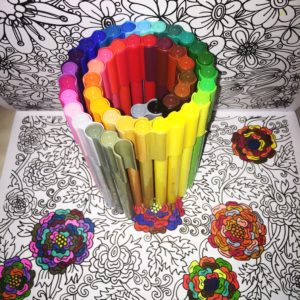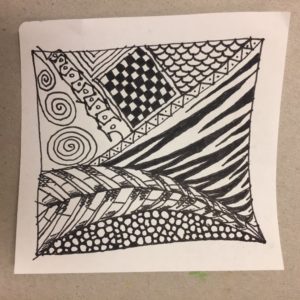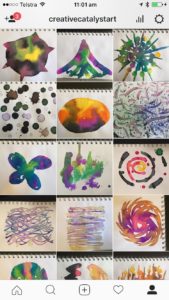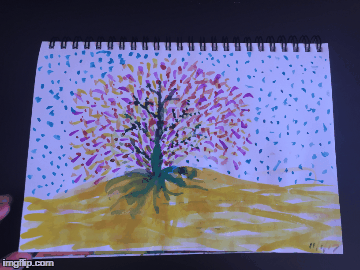
So many unfinished colouring pages
Colouring books flooded into bookstores a few years ago, growing from 1 to 12 millions sales between 2014 and 2015 (in the US alone). Although books are starting to trickle onto sales tables, interest remains stable, representing a worldwide desire to take time out for creativity.
Critics dismiss colouring as a fad, a childish hobby indulged by grown-ups, and superficial wellness that has no relation to the deeper work of art therapy.
But I see nothing wrong with returning to childhood fun, play is just as important for adults.
No one argues that colouring is for everyone, or that colouring in books are a substitute for solving the sources of stress.
It’s ok to try colouring, and stick with it or move on to other hobbies when you’re ready. Colouring might be an accessible way to get into art and art therapy.
Picking up a paintbrush or pencil can be intimidating as an adult, especially after receiving messages that art is only for the talented. Where do you start? I call it ‘blank canvas syndrome’ – where you don’t know what to make and you sit there with your fancy new art materials, too scared to begin making a mark on the white page.
Colouring books solve this problem by giving structure to help you get started and keep going.
Once comfortable with that structure, I have a few ideas on how you can challenge yourself beyond colouring in. I’ll show how you can introduce more elements of free expression and what benefits this brings.
Beyond Colouring – Creative Outlets to Try
Starting with the support of colouring books then breaking out of the lines to free expression is a lesson that mirrors life.
Colouring

Do you colour in the lines?
Not as prescriptive as paint-by-numbers, books or mandala templates allow creative expression through the choice of colour. Avoiding distractions to focus on the colouring task builds mindful concentration. Perfectionists can struggle with needing to neatly colour between the lines, eventually learning to enjoy the process as much as the finished product.
Doodling

Zentangle structured patterns
Doodling also cops criticism as merely ‘the scribbling done on notes during boring meetings’ which sounds valuable to me! Doodling is a little less structured than colouring because you are creating the lines yourself, but you can make use of step-by-step approaches and doodle libraries such as Zentangling (drawing structured patterns). For examples of how far you can go with doodling, check out artonthefridge which started as a personal challenge to create a drawing a day.
Mandala

Computer generated mandala
Mandalas are decorative circles created as artistic representations of the self. Symmetric patterns that radiate from the centre are usually created in the circle but organic shapes are also used. The mandala creation process is an aid to meditation, and reflecting on the contents is a technique for gaining insights into the self. Many guides exist for drawing intricate patterns or you could play with this generator, print out your design and colour it in.
Art Journal Prompts

Liquid watercolour 30-day challenge
Now you’re getting into the habit of taking the time to create art, consider getting an art journal to keep your works and track them over time. Art journal challenges are often set up for people to follow and post pictures on Instagram. The art journal prompts mean you’re not stuck on what to do, you can use other posts as inspiration but you still have the choice in how to interpret it (and whether you want to share online or to keep private). Committing to a month-long challenge is less daunting than keeping up with a daily practice. Themes range from skill development (practice art technique) to self-awareness (reflective questions).
Free Art Journaling

How was your day?
What do I feel like creating today? After gradually building up your comfort in self-expression, you’re ready for a daily art journal. Change it up, test new materials instead of getting stuck in a rut. Long term art journaling allows you to notice changes over time and recurrent themes.
Where is the art therapy?
Whilst these activities don’t involve the art therapy process that you would have with a therapist, they include increasing therapeutic elements. There is an incidental therapeutic value from making art. By adding in elements of self-expression, you are learning to be comfortable using art as an outlet and to communicate your experience. Reflecting on what has been created or choosing topics to explore that concern self-reflection can lead to increased self-awareness.
For more ideas on how to use art as a reflective tool, the ARTLABs show example processes.